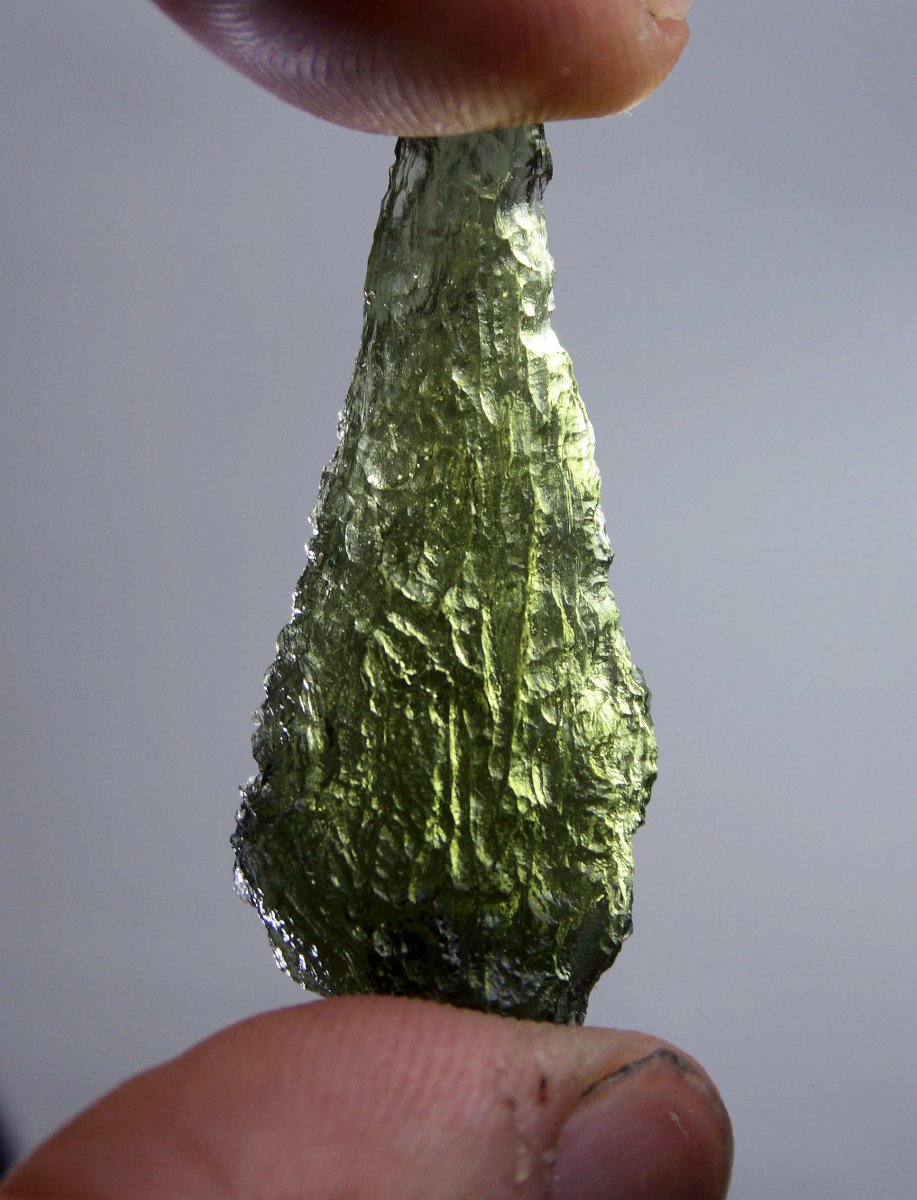An improved theory of moldavite formation
 According to the generally accepted theory, moldavites were formed at high pressures and temperatures from superficial Tertiary sediments in the Ries area in Germany during an impact of a huge meteorite 14.75 million years ago. A giant crater is to remind of this meteorite impact. The study published in the Geochimica et Cosmochimica Acta journal focused on a detailed comparison of chemical composition of moldavites and their presumed parent rocks located at the impact site. The analyses confirmed the known marked discrepancies in the contents of many elements between the source materials and moldavites. These discrepancies were now explained by an innovated model of moldavite origin. Material which functioned as the source for moldavites included, besides Tertiary sediments, also some amounts of organic material and soil. Material ejected from the impact site at a speed of several kilometres per second was subjected to complex interactions between the melt and the part of the ejected mass transferred into plasma. The key motive of the new model is the disintegration of melt into fine micro-drops due to the escape of volatile compounds. It was the form of micro-drops which was responsible for the loss of some volatile elements as well as for the enrichment in other elements which condensed on their surface or had the form of separate drops. Moldavites, as found today, were then formed by merging of fine drops and by the formation of larger bodies in the process of mass transport above the level of the atmosphere. Finally, they were deposited mostly in the territory of the present Czech Republic. Besides the Ries area, yet other impact structures were studied within the project financed by the Czech Science Foundation. The meteorite which impacted the Zhamanshan crater in Kazakhstan about one million years ago was characterized as for its elemental composition.
According to the generally accepted theory, moldavites were formed at high pressures and temperatures from superficial Tertiary sediments in the Ries area in Germany during an impact of a huge meteorite 14.75 million years ago. A giant crater is to remind of this meteorite impact. The study published in the Geochimica et Cosmochimica Acta journal focused on a detailed comparison of chemical composition of moldavites and their presumed parent rocks located at the impact site. The analyses confirmed the known marked discrepancies in the contents of many elements between the source materials and moldavites. These discrepancies were now explained by an innovated model of moldavite origin. Material which functioned as the source for moldavites included, besides Tertiary sediments, also some amounts of organic material and soil. Material ejected from the impact site at a speed of several kilometres per second was subjected to complex interactions between the melt and the part of the ejected mass transferred into plasma. The key motive of the new model is the disintegration of melt into fine micro-drops due to the escape of volatile compounds. It was the form of micro-drops which was responsible for the loss of some volatile elements as well as for the enrichment in other elements which condensed on their surface or had the form of separate drops. Moldavites, as found today, were then formed by merging of fine drops and by the formation of larger bodies in the process of mass transport above the level of the atmosphere. Finally, they were deposited mostly in the territory of the present Czech Republic. Besides the Ries area, yet other impact structures were studied within the project financed by the Czech Science Foundation. The meteorite which impacted the Zhamanshan crater in Kazakhstan about one million years ago was characterized as for its elemental composition.
Reference:
Žák, K. – Skála, R. – Řanda, Z. – Mizera, J. – Heissing, K. – Ackerman, L. – Ďurišová, J. – Jonášová, Š. – Kameník, J. – Magna, T.: Chemistry of Tertiary sediments in the surroundings of the Ries impact structure and moldavite formation revisited. Geochimica et Cosmochimica Acta. 179 (2016), 287–311.

